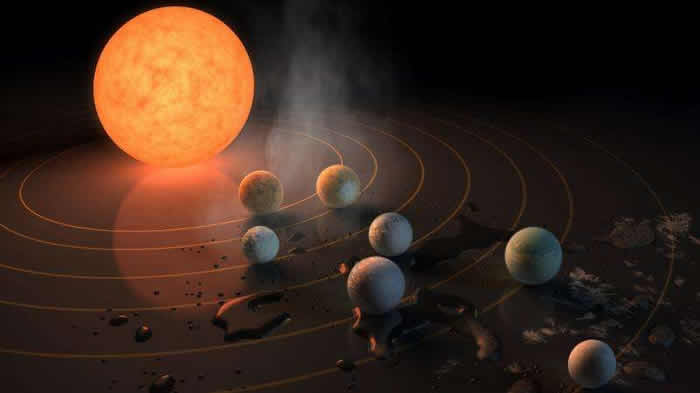Hello, are there any aliens out there?
Far-away planet systems are shaped like the solar system, with multiple planets aligning with the host star on a flat plain. The finding was made by the researchers at The Australian National University (ANU), and is being described as a discovery that could increase the chance of finding alien life.
 Co-researcher Associate Professor Charley Lineweaver said NASA’s discovery of the seven-planet system being on a flat plain supported this research, which challenges the usual assumption that planet systems are flared like bellbottoms.
Co-researcher Associate Professor Charley Lineweaver said NASA’s discovery of the seven-planet system being on a flat plain supported this research, which challenges the usual assumption that planet systems are flared like bellbottoms.
“Other planet systems in the universe seem to be much like our solar system,” said Dr Lineweaver from the ANU Research School of Astronomy and Astrophysics (RSAA).
“The more we find out about these planet systems the more it seems the solar system is unexceptional.”
The Kepler space telescope has detected more than 4,000 planets orbiting 3,200 stars. The majority of these host stars have only one detected planet, while 656 have multiple planets.
The lead author of the research paper, being published in The Monthly Notices of the Royal Astronomical Society, is RSAA PhD student Tim Bovaird.
He commented: “The wealth of the Kepler planet data allows for the first time detailed studies of planet systems outside the solar system. We are now able to ask and answer questions like, how common are planet systems like our own?”
Simulations of these planet systems had previously only matched the observed data by assuming a Kepler Dichotomy, an assumption that there are two types of star: one type with only one planet, and another type with multiple planets.
“Simulations with flared planet systems were slightly easier to perform and that is what researchers had assumed,” Bovaird said.
“But this is an odd assumption because the inner part of our solar system is flat, not flared. When we dropped the assumption that planet systems are flared, simulations naturally matched the observed data without using the Kepler Dichotomy.”
Dr Lineweaver said the team’s result should demote the Kepler Dichotomy and allow more realistic interpretations of new planet systems.
More information: Phys.org
